Sony VPL-XW7000ES 4K HDR Laser Projector Review
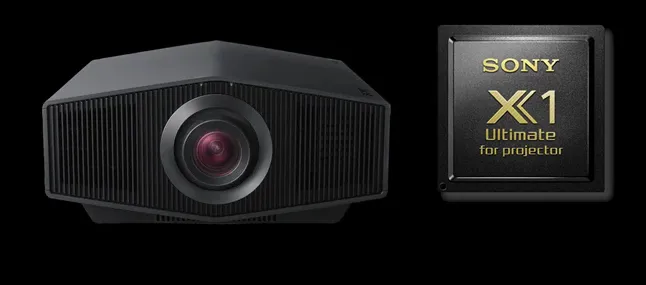
Tony O'Brien tries out a superb premium-priced 4K HDR projector…
Sony
VPL-XW7000ES
£14,999 RRP
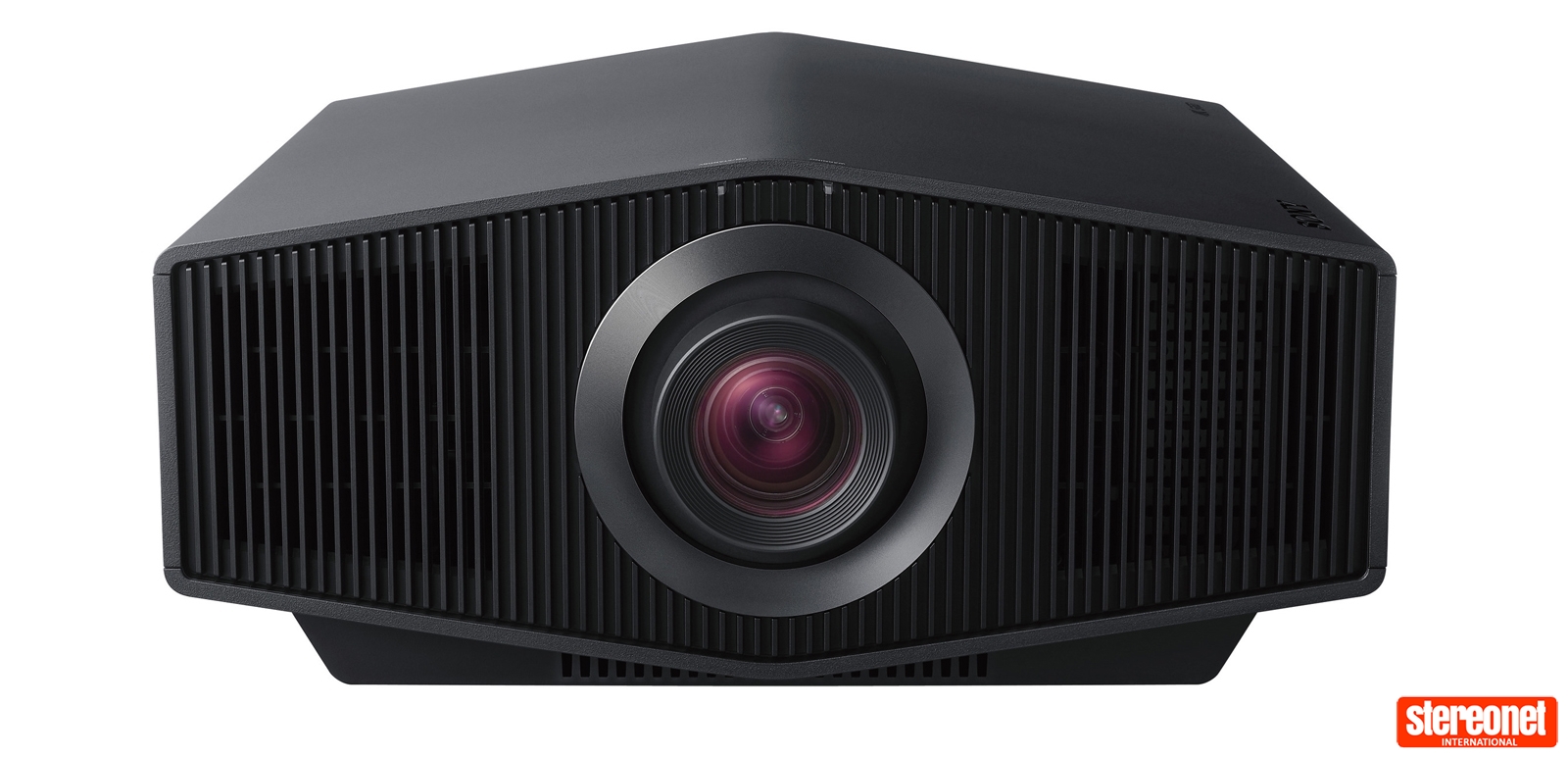
Sony pulled the proverbial 'rabbit out of the hat' with the release of the VPL-XW5000ES projector in 2022. A quantum leap forward in both value and performance, it outperformed its predecessor, the VPL-VW290ES, in about every regard. The biggest surprise came in the form of much improved black levels, leaving the older version in the dust. In fact, it was so good that it left me wondering why on earth you would spend more on the VPL-XW7000ES unless you had a larger screen.
Like its little brother, the VPL-XW7000ES has been re-engineered from the ground up. Outfitted with Sony's new 0.61 SXRD panel, it's the smallest chipset on the planet with a native resolution of 3,840x2,160. Pushing the envelope in terms of dynamic range, Sony has implemented a new reflective silicon layer to reduce light scatter. The result is said to be improved black levels, shadow detail and less light bleed. Likewise, the whole optical pathway has been redesigned from the ground up. The new 'Wide Dynamic Range' optics are designed to increase brightness and improve black levels.
Sony insists on producing its lenses in-house, and the VPL-XW7000ES comes fitted with a new Advanced Crisp Focus Lens. It incorporates a Φ70mm Aspherical Front Lens and dual Floating Focus System with Extra Low Dispersion Glass. This is said to create a broader focus area, while the dual floating lens system avoids curvature in images that can occur with a single lens group. It allows this projector to achieve highly stable images from centre to corner without distortion, Sony says.
At the heart of the VPL-XW7000ES is a new laser light source incorporating a cluster of blue laser diodes, with a quoted 3,200 lumens. It's a massive jump on the VPL-XW5000ES and its VPL-VW790ES predecessor, which share a quoted light output of 2,000 lumens. Tying it all together is Sony's X1 Ultimate Projector Picture Processor. It's the same processor found in the VPL-XW5000ES and Sony's pricey flagship projector, the GTZ-380. With it comes object-based super-resolution and Sony's Digital Focus Optimiser.
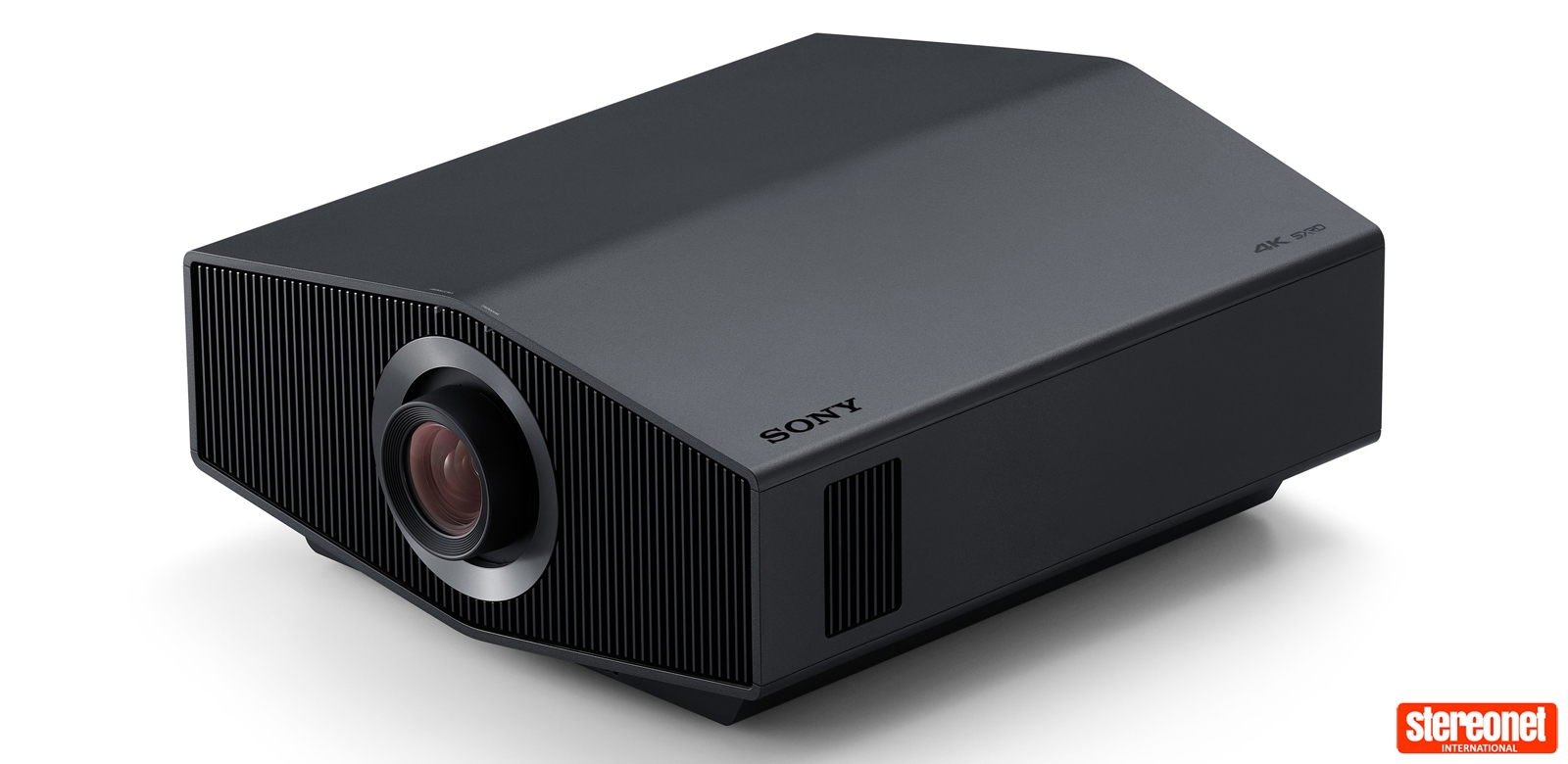
Capable of detecting hundreds of objects in an image, the X1 chipset sports dual database processing to reduce noise and upscale resolution. This occurs in real-time, dynamically improving pixels, with images mapped against databases containing tens of thousands of references. Meanwhile, the Digital Focus Optimiser performs image correction to prevent softening of images, particularly towards the corners of the screen. While the processor is hardly source-agnostic, Sony tells me the most significant benefits apply to streamed content with sharper and more detailed images—something I've witnessed firsthand with the company's previous generation of projectors.
One of the features differentiating the VPL-XW7000ES from the competition is Sony's Dynamic HDR Enhancer, Sony's Dynamic Tone Mapping (DTM) solution. Operating in the contrast realm, it applies contrast enhancement and laser light control on a scene-by-scene basis, adhering to the HDR PQ curve as closely as possible. It's bolstered by Sony's HDR Remaster, which applies contrast enhancement to individual objects in an attempt to emulate the dynamic range found in HDR televisions.
The VPL-XW7000ES is quoted as capable of producing 95% of the P3 colour gamut coverage, which is the wider colour gamut found in 4K HDR. Unlike the VPL-XW5000ES, it is also equipped with Sony's Live Colour Enhancer, which is claimed to expand the colour gamut to "emphasise the HDR feeling" while keeping skin tones intact.
As well as supporting HDR, the VPL-XW7000ES supports Hybrid Log-Gamma (HLG). Surprisingly, it doesn't support HDMI 2.1 but has a quoted delay of 27 milliseconds for 4K 60P signals and 16 milliseconds for 2K 120P signals. Gamers, I suspect, will take exception to its lack of HDMI 2.1 support, firmly entrenching the VPL-XW7000ES first and foremost as a home theatre projector. This projector is also IMAX Enhanced Certified and with an external transmitter, 3D capable. It's worth noting that Sony no longer produces 3D glasses, so they must – like the external transmitter – be sourced locally. If you plan on using this projector for 3D, I'd recommend looking into both of these first. Last but not least, support for home automation systems includes compatibility with Control 4, Savant, Crestron Home and AMX.
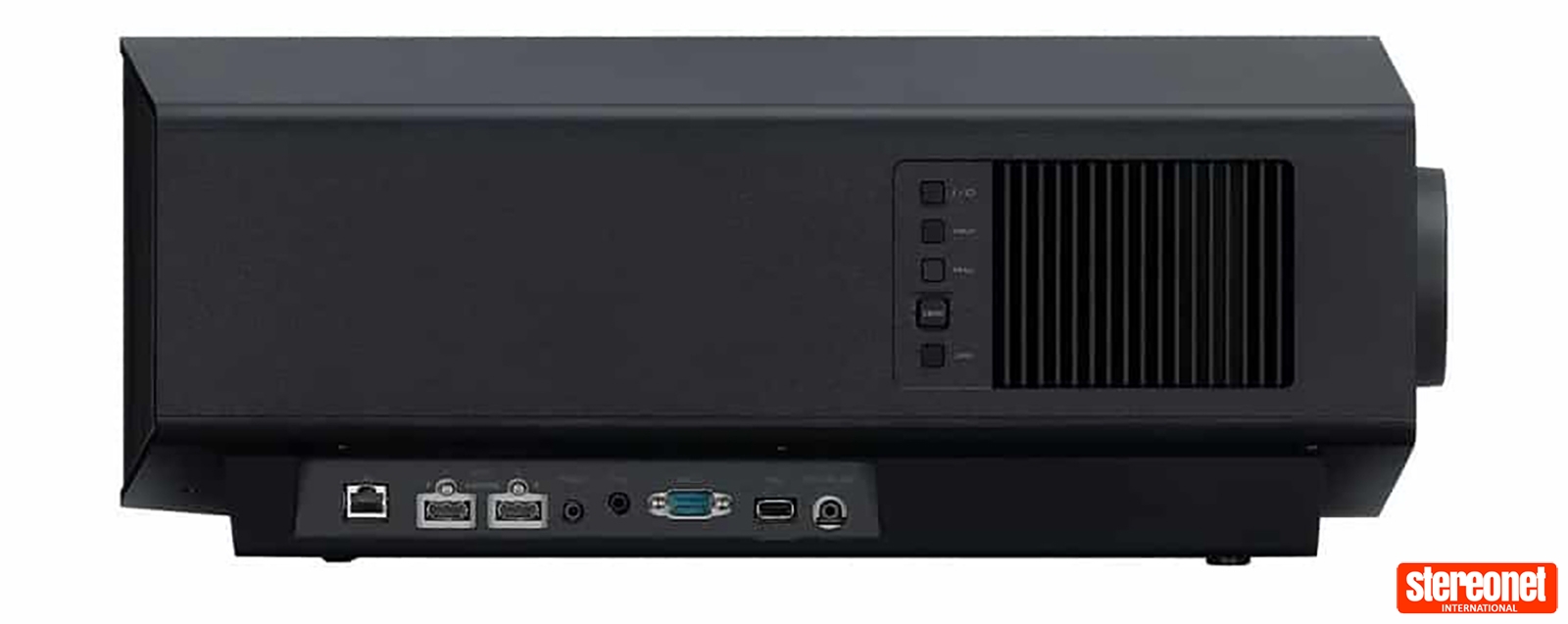
GETTING GOING
The VPL-VW7000ES is clearly a different projector from its predecessors. At 460x210x517mm, it's one-fifth smaller in volume and weighs 13kg, which is considerably lighter than its 20kg predecessor, the VPL-XW790ES. Sony tells me much of the size difference is due to the new 0.61 SXRD chipset. It's also considerably more environmentally friendly; power consumption per lumen is 30% less than the VPL-VW790ES.
The front of its matt black chassis features cooling vents with a centrally mounted lens. Like the projector's body, the lens is also smaller, putting me very much in mind of the lenses found on Sony's older 1080p projectors.
Mercifully, Sony has decided to keep all the connections – apart from power – on the side of the projector, allowing it to squeeze into smaller spaces. The VPL-XW7000ES has two HDMI inputs (HDCP 2.2) with an 18GB workflow (4K, 60p 10-bit signal processing). Other connections include an Ethernet port, two 12-volt triggers, an IR input, an RS232C connection and a USB-A input.
Unlike the VPL-XW5000ES, it has a motorised lens with a vertical shift of +85% -80% and a horizontal shift of +/-31%. Owners of scoped screens will be happy to discover it has lens memories, enabling it to accommodate different aspect ratios. A three-chip LCOS projector, the VPL-XW7000ES also has controls for digitally aligning its RGB LCOS chips.
The Sony was connected to a JBL SDR-35 AV receiver for this review. Source devices included both a Magnetar UPD-800 4K Blu-ray player and Apple TV, which were connected to the receiver. Images were projected onto a 100-inch (1.0 gain) Severtson Cinegray 16.9 screen.
Speakers consisted of VAF Signature i91 fronts and centre, and four VAF i90s for surround and overhead Atmos channels connected to a JBL Synthesis SDA-7120 power amplifier. Two Ascendo SV-12 subwoofers rounded out the speaker configuration for a 5.2.2 Atmos layout. Please read on if you want to learn more about how Sony's VPL-XW7000ES is measured and calibrated. Otherwise, feel free to skip the following section…
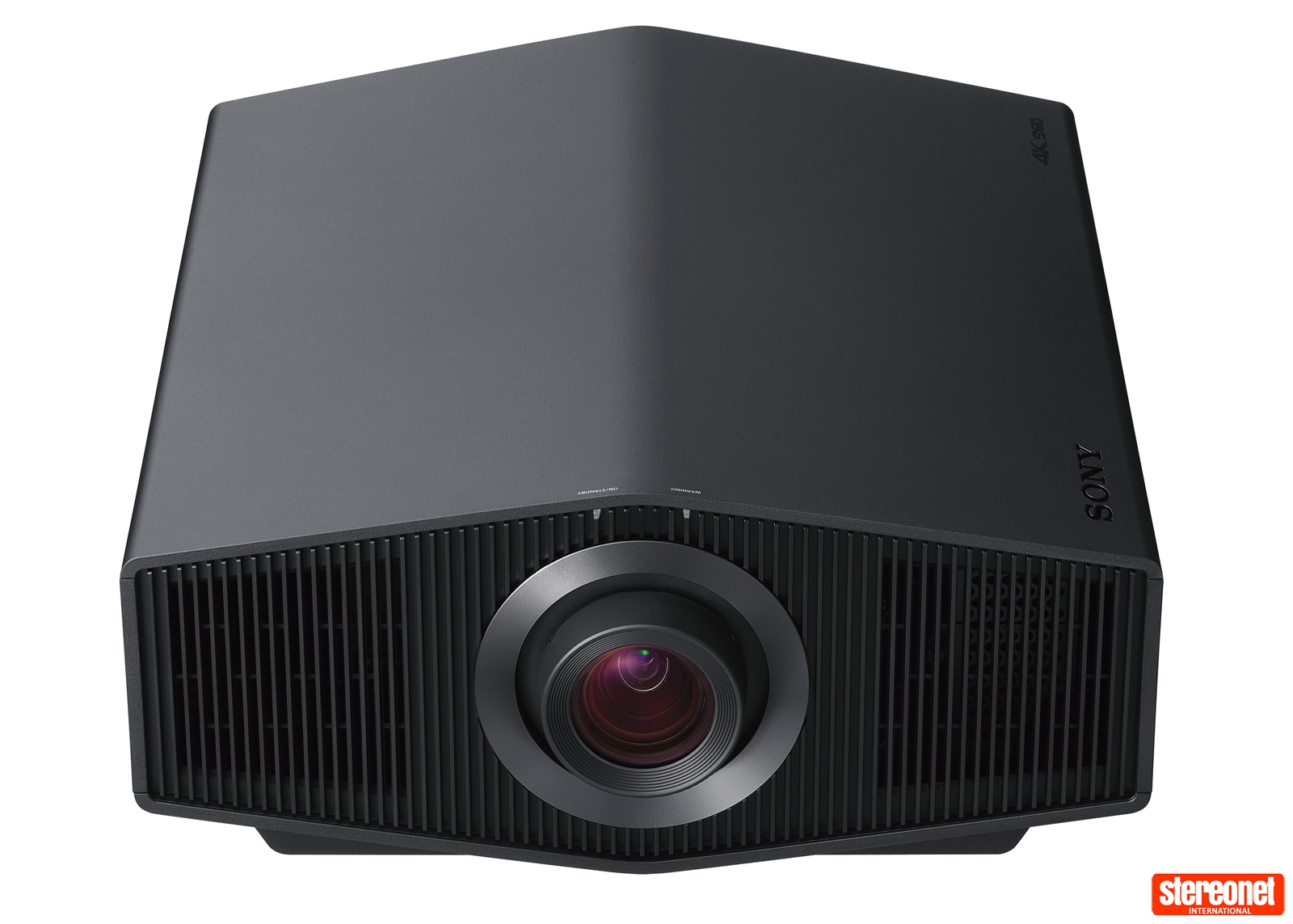
MEASUREMENTS AND CALIBRATION
The VPL-XW7000ES was calibrated to industry standards for SDR and HDR with a Klein Instruments K10A colorimeter, profiled against a reference-grade 2nm (high-res) JETI 1501 spectroradiometer. Test patterns for SDR and HDR were rendered by a Murideo 6G pattern generator, with 10% window patterns used for calibration and measuring light output. The 2023 Spears & Munsil HDR Benchmark was also used for measurements and calibration. Calibration software consisted of Calman Ultimate (2023) and Sony Projector Pro Calibration software.
The VPL-XW7000ES has ten selectable picture modes: Film 1, Film 2, Reference, TV, Photo, Game, Bright Cinema, and User and Imax Enhanced. In addition to basic controls such as brightness, contrast and colour, it has two-point grayscale controls, nine selectable gamma presets and a six-point colour management system. A three-chip LCOS projector, it has controls for digitally aligning its RGB LCOS chips.
The projector was calibrated in Reference Mode for both SDR and HDR playback. After SDR calibration, with the laser set to 40, I obtained a little over 26fL with Dynamic Control set to full. After calibration, it produced outstanding greyscale accuracy with an average dE of 0.48; gamma response was likewise excellent, adhering closely to the 2.2 curve. Colour accuracy remains Sony's strong suit, the projector producing a maximum dE of 1.68 with 20% saturation sweeps.
In HDR mode, the VPL-XW7000ES offers the same picture modes, with the option to choose different laser settings, brightness and contrast levels. It also forces the colour space to BT.2020 with three EOTF options: Auto, HDR10/HLG, HDR Reference/ HLG and engages Sony's Dynamic HDR Enhancer. Out of the box, the projector produced (1976 uv) UHDA-P3 gamut and 80.92% (1931 xy) UHDA-P3 gamut coverage. Some coaxing expanded this to 92.52% and 91.69%, respectively. With the laser in its default position of 80 and Dynamic Laser turned off, it produced a whopping 75 fL. Putting the laser in its maximum position resulted in 84fL or 64FL with the dynamic laser on full.
Click here to download the calibration PDFs.
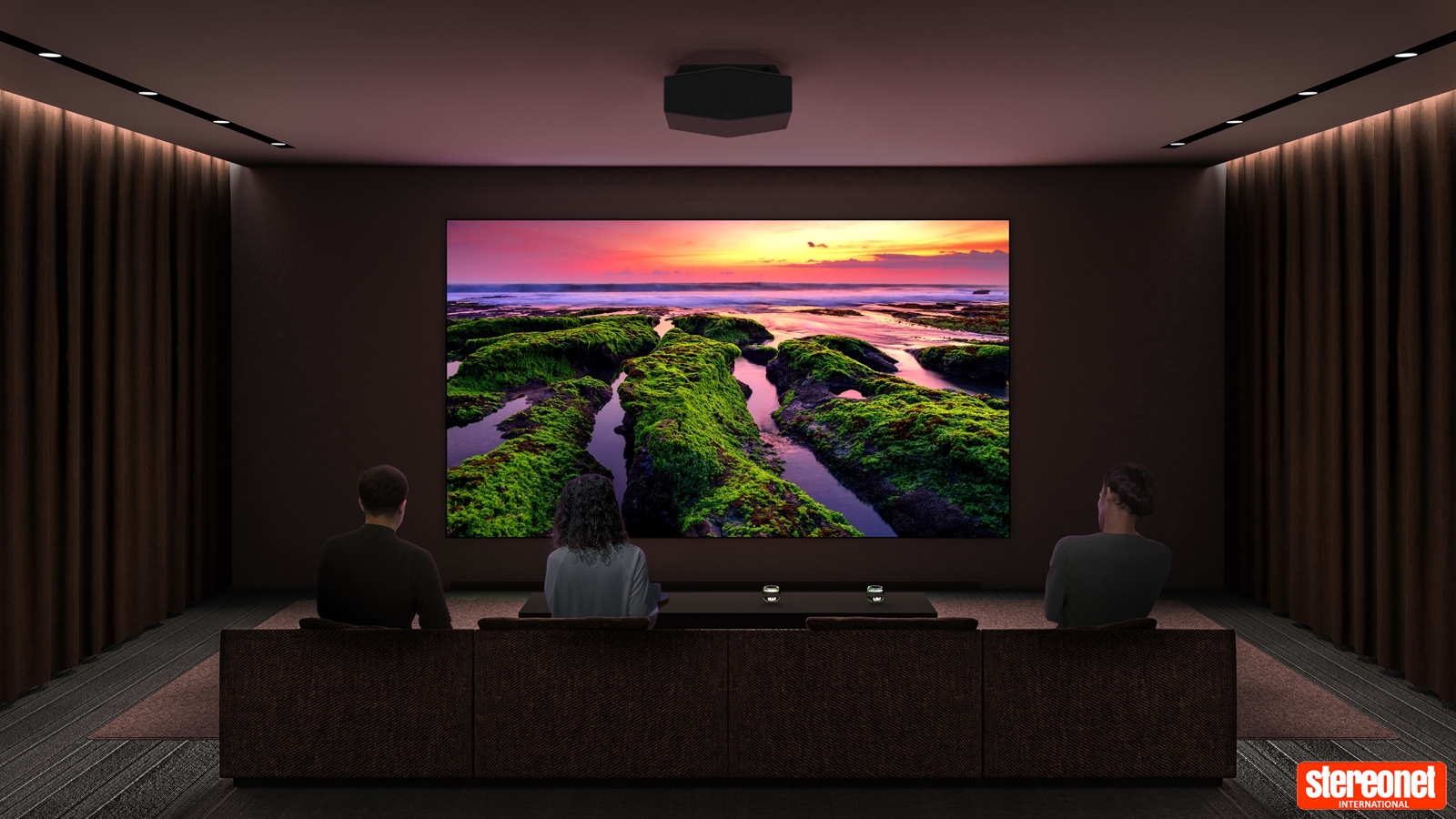
LIGHTS, CAMERA, ACTION!
Sony's VPL-XW7000ES produces detailed images, with its superb dynamic range providing a wonderful sense of depth that adds to overall realism. Colour reproduction is likewise excellent, with the projector producing a natural palette with convincing skin tones.
The sharpness of Sony's Crisp Focus Lens gives images a clear leg up on the smaller VPL-XW5000ES, as does its extra brightness, which creates startling HDR imagery. Streamed content also fares equally well, such content appearing both sharper and more defined with the X1 chipset.
Clawing its way to the top of my demonstration list, the ever-familiar Wolverine Blu-Ray (SDR) is nothing short of superb with the VPL-XW7000ES. The sheer dynamic range combined with accurate gamma tracking gives the image an excellent sense of depth that makes images pop. The SDR colour palette fares equally well; achromatic colours such as stone and metal are free of unwanted colour intrusion, giving them a realistic appearance. Skin tones, meanwhile, are extremely life-like. On lesser projectors, Logan's ruddy skin tone can make him appear slightly sunburnt; the Sony, however, walks this fine line carefully, with Logan's look accurately portrayed.
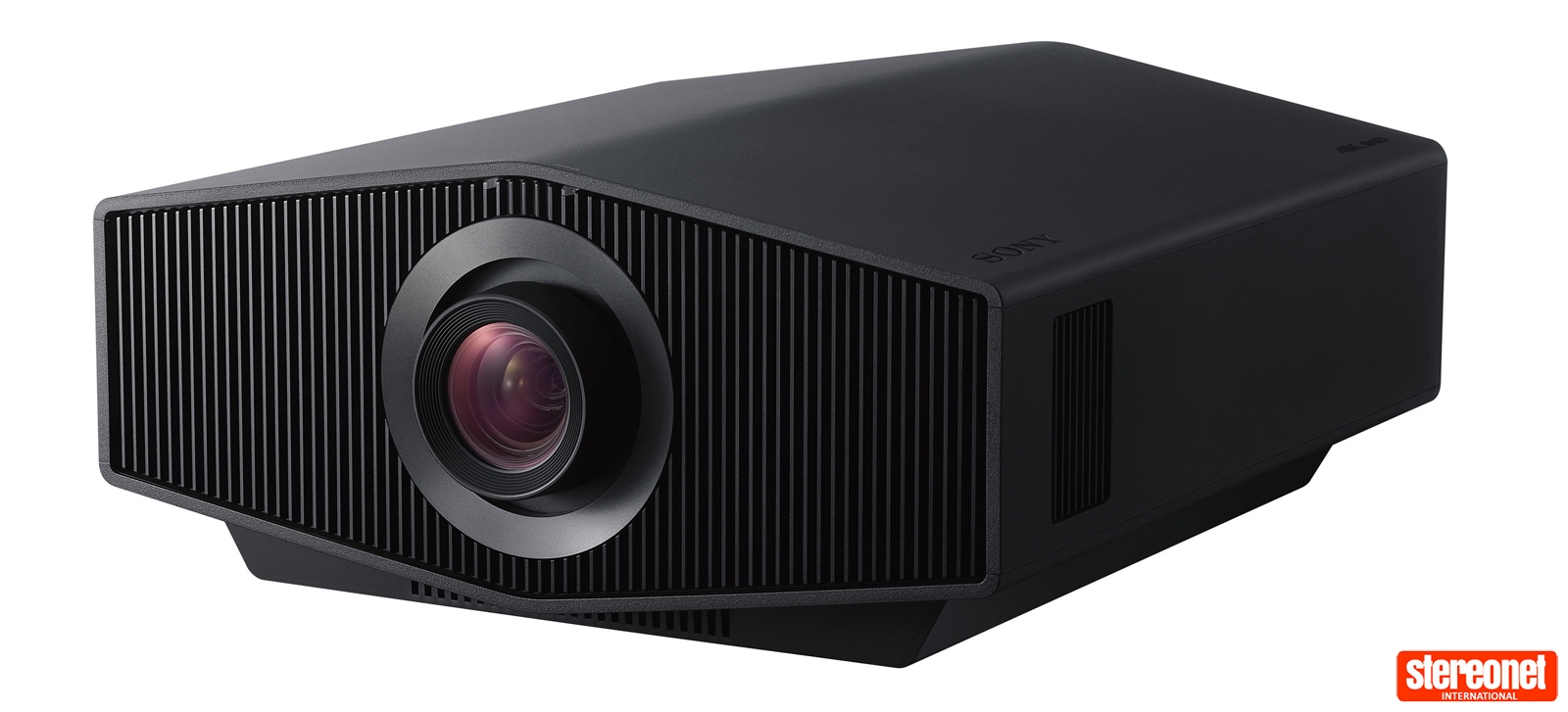
With the 4K Ultra HD of The Hobbit: The Battle of the Five Armies, the VPL-XW7000ES high brightness and excellent black levels create beautiful HDR imagery – the play of shadow is punctuated by the sunset, and other plays of light are truly dazzling. While it's possible to turn off and forgo Sony's Dynamic HDR Enhancer, images are often better for it. It creates a TV-like experience that accentuates black levels and boosts bright highlights.
As Smaug devastates Lake Town, the bright flames of the dragon are eye-catching, to say the least. As much fun as I had experimenting with the Dynamic HDR enhancer – and you're going to want to experiment with this and the contrast in HDR to get the balance of shadow detail and brightness just right – it's not without compromise. As eye-catching as the dragon's flames look, it's evident that some clipping of high-level detail is taking place. Like the VPL-XW5000ES, it's definitely a case of 'season to taste'. Tasked with the 4K Ultra HD of It Chapter Two, the Sony puts in an equally impressive HDR performance. Dark presentations such as this one benefit greatly from the excellent black levels, with the shadows handled competently before falling away into inky blackness.
Colour reproduction in HDR was just as impressive as its SDR counterpart. Experimenting with Sony's Live Colour Control, I found that it mostly leaves skin tones intact. However, it is at the cost of colour accuracy in other areas. For instance, during bright outdoor scenes in Derry, foliage and grass no longer look natural, and shadow detail is unnaturally boosted. Live Colour, I suspect, is another luminance control, which is best turned off if you favour natural colour – the VPL-XW7000ES produces more natural-looking images without it.
As sharp as the VPL-XW5000ES is, it couldn't match the sharpness of the Advanced Crisp Focus Lens on the VPL-XW7000ES. Comparing the two, the former appears slightly out of focus next to the latter – which creates razor-sharp images that add to the illusion of realism. Coupled with the X1 processor, images are not only sharper but also enjoy a new level of detail. Where it truly shines, though, is with streamed content. As good a transfer as Netflix's Planet Earth II is, the streamed content can't match 4K Ultra-HD discs in terms of sharpness and overall clarity. And, while it won't match the likes of a Lumagen or madVR, it's surprisingly good at what it does, bridging the gap rather nicely.
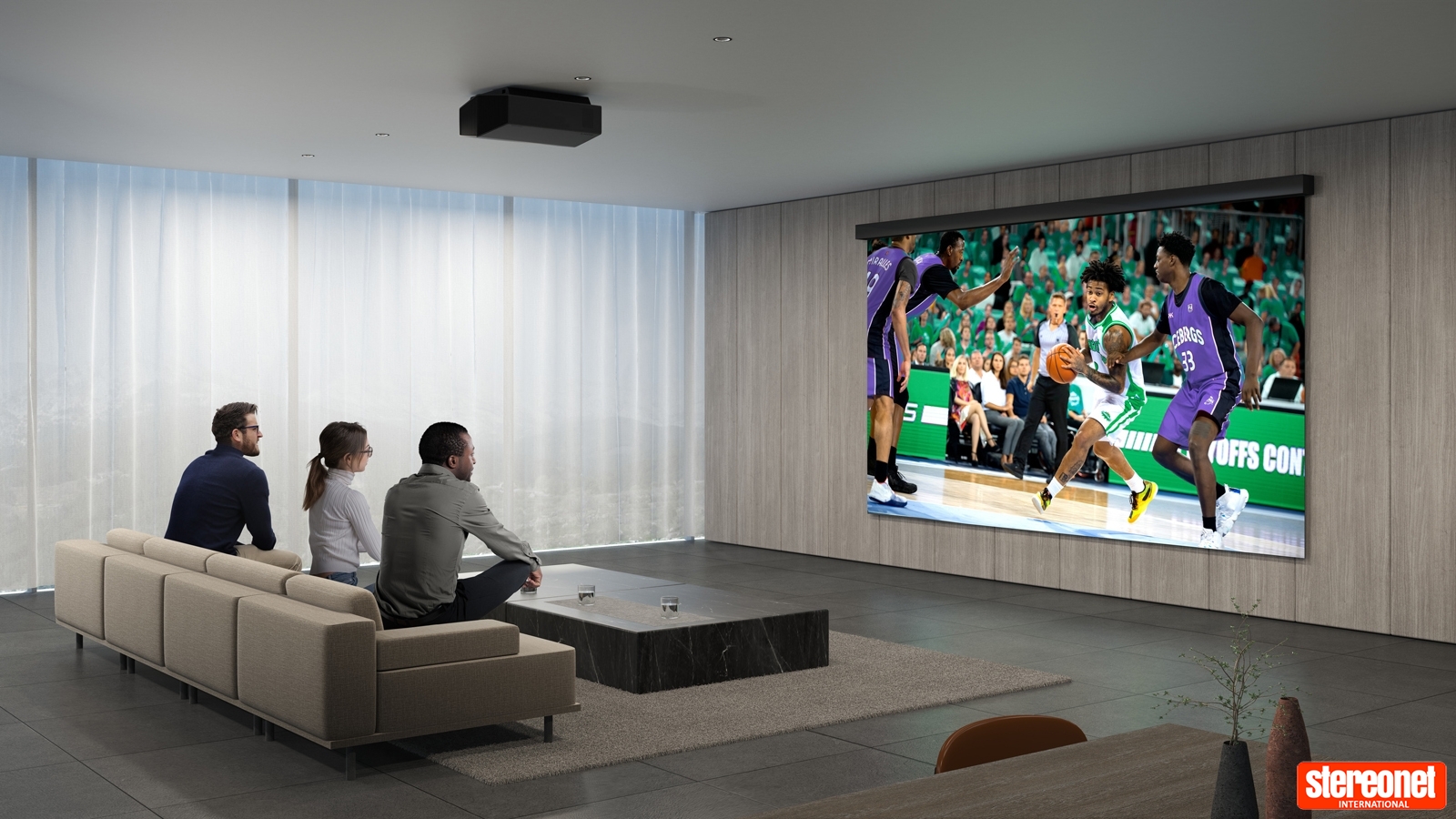
CONCLUSION
 Sony's VPL-XW7000ES employs a Dynamic Contrast Enhancer to create TV-like images that, coupled with its excellent dynamic range, are positively eye-catching. The dynamic range capabilities are equally impressive with SDR images, giving an excellent sense of depth and pop. Streamed content fares equally well, as the X1 processor markedly improves the quality of streamed video.
Sony's VPL-XW7000ES employs a Dynamic Contrast Enhancer to create TV-like images that, coupled with its excellent dynamic range, are positively eye-catching. The dynamic range capabilities are equally impressive with SDR images, giving an excellent sense of depth and pop. Streamed content fares equally well, as the X1 processor markedly improves the quality of streamed video.
It is helped in no small part by this projector's superb Advanced Crisp Focus Lens, which gives razor-sharp images. While it's likely to be matched with larger screens, those with smaller screens will also benefit from its extra lumens. Matched with a 100-inch screen, I achieved the type of bright HDR images typically associated with projectors costing many times the price of this excellent product. As such, the VPL-XW7000ES comes very highly recommended.
For more information visit Sony
Tony O'Brien
As the owner of Clarity Audio & Video Calibration, Tony is a certified ISF Calibrator with over a decade of experience. Tony is an accomplished Audio-Visual reviewer specialising in theatre and visual products for over a decade at StereoNET.
Posted in: Applause Awards | 2023 | Visual | Projectors | Home Theatre | Visual
JOIN IN THE DISCUSSION
Want to share your opinion or get advice from other enthusiasts? Then head into the Message
Forums where thousands of other enthusiasts are communicating on a daily basis.
CLICK HERE FOR FREE MEMBERSHIP
Trending
applause awards
Each time StereoNET reviews a product, it is considered for an Applause Award. Winning one marks it out as a design of great quality and distinction – a special product in its class, on the grounds of either performance, value for money, or usually both.
Applause Awards are personally issued by StereoNET’s global Editor-in-Chief, David Price – who has over three decades of experience reviewing hi-fi products at the highest level – after consulting with our senior editorial team. They are not automatically given with all reviews, nor can manufacturers purchase them.
The StereoNET editorial team includes some of the world’s most experienced and respected hi-fi journalists with a vast wealth of knowledge. Some have edited popular English language hi-fi magazines, and others have been senior contributors to famous audio journals stretching back to the late 1970s. And we also employ professional IT and home theatre specialists who work at the cutting edge of today’s technology.
We believe that no other online hi-fi and home cinema resource offers such expert knowledge, so when StereoNET gives an Applause Award, it is a trustworthy hallmark of quality. Receiving such an award is the prerequisite to becoming eligible for our annual Product of the Year awards, awarded only to the finest designs in their respective categories. Buyers of hi-fi, home cinema, and headphones can be sure that a StereoNET Applause Award winner is worthy of your most serious attention.





